
We’ve finally gotten our summer here in the Pacific NW and it’s been pretty hot for a few weeks. The plants weren’t really prepared for this, so we’ve had to irrigate quite a bit to keep all that lush foliage happy. So the topic of this podcast is Water Works – focusing on how water moves in the soil and through plants.
One of the more interesting tidbits I found this week is a recent USDA study on growing more potatoes with less water. Sound impossible? Listen to find out the one single, simple thing that increased water use efficiency by 12% and reduced fertilizer runoff as well.
I also debunk the common myth about using drainage material in container plants. Research from 100 years ago demonstrated that water won’t cross textural barriers – so putting gravel in the bottom of the pot will actually create a bathtub effect rather than helping drainage.
The interview this week is with my garden – primarily the sunny south-facing side. I thought I’d take you on a tour to see what’s happened in the last 11 years. The photos below will help you visualize the interview.
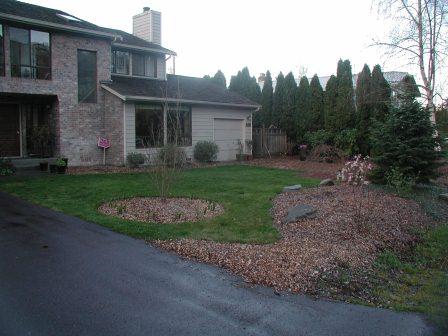
The front yard in 2003. We’ve started taking out the turf and moving around trees and shrubs.
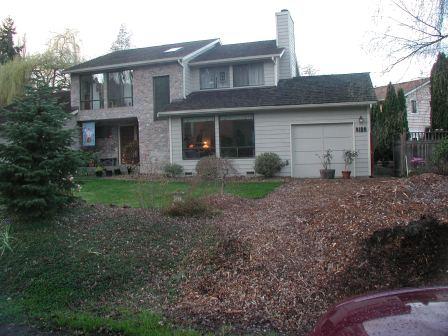 The front yard in 2003 from another angle. We’ve removed the second driveway and covered the area in wood chips. By the garage you can see two of the roses I dug up from the shady back yard and moved to the sunny front.
The front yard in 2003 from another angle. We’ve removed the second driveway and covered the area in wood chips. By the garage you can see two of the roses I dug up from the shady back yard and moved to the sunny front.
 The new front yard, with fencing, more plants, a pond, and no turf.
The new front yard, with fencing, more plants, a pond, and no turf.
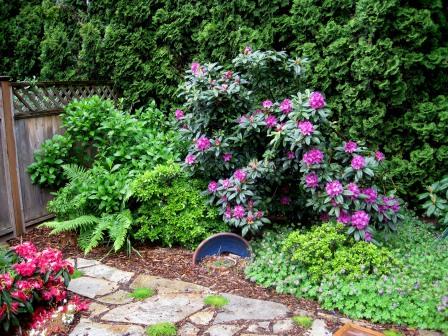 The rhody-hydrangea corner in front of the arbor vitae hedge
The rhody-hydrangea corner in front of the arbor vitae hedge
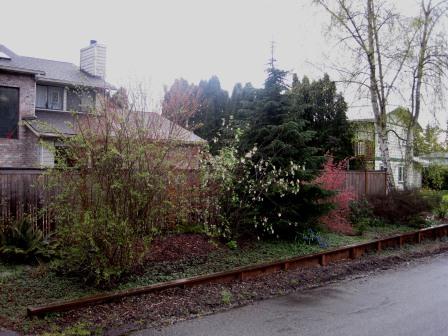 The new street garden, with a new retaining wall to hold back the soil that used to wash into the street. Everything not covered in plants is covered with wood chips.
The new street garden, with a new retaining wall to hold back the soil that used to wash into the street. Everything not covered in plants is covered with wood chips.
This is the last podcast of the first “season” of The Informed Gardener. We’re going to take off for about a month before starting the next series. If you’ve got ideas about future topics, you can email me or post a comment here. In the meantime, you can listen to archived podcasts found on this blog; just click on “podcasts” on the right-hand menu.

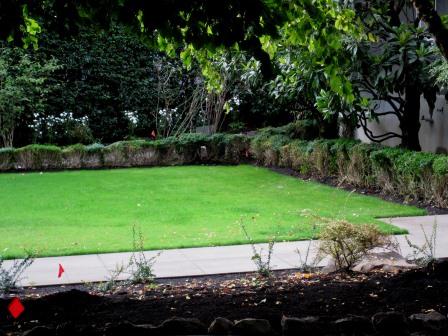
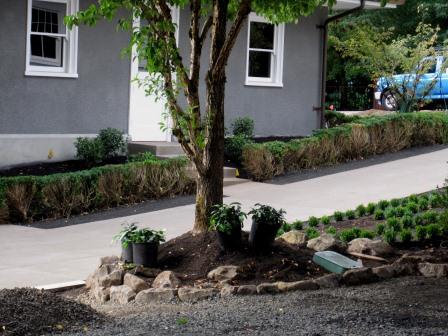 And again
And again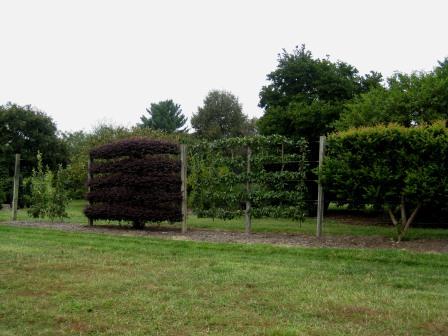
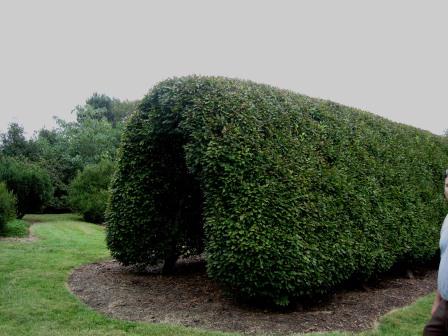
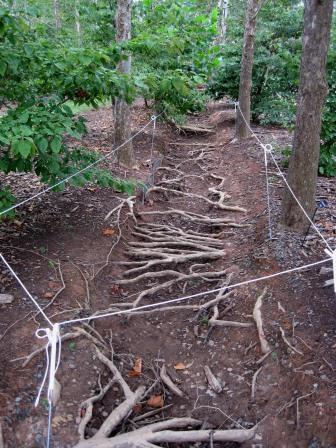
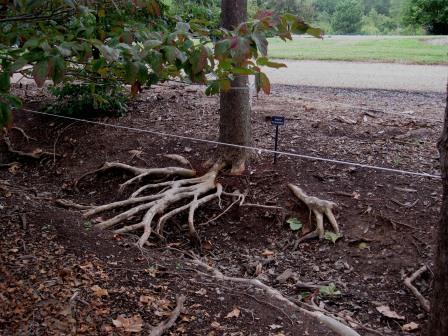


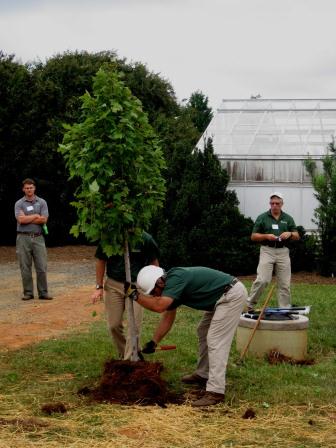
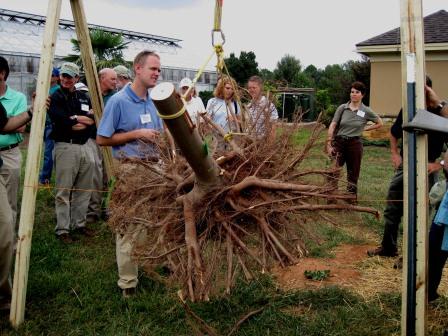
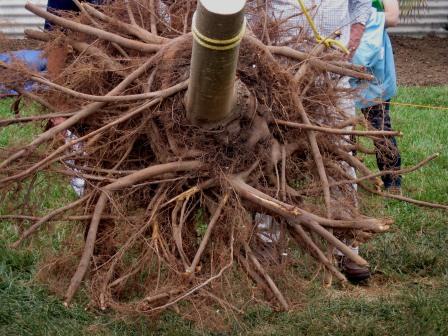

 The front yard in 2003 from another angle. We’ve removed the second driveway and covered the area in wood chips. By the garage you can see two of the roses I dug up from the shady back yard and moved to the sunny front.
The front yard in 2003 from another angle. We’ve removed the second driveway and covered the area in wood chips. By the garage you can see two of the roses I dug up from the shady back yard and moved to the sunny front. The new front yard, with fencing, more plants, a pond, and no turf.
The new front yard, with fencing, more plants, a pond, and no turf. The rhody-hydrangea corner in front of the arbor vitae hedge
The rhody-hydrangea corner in front of the arbor vitae hedge The new street garden, with a new retaining wall to hold back the soil that used to wash into the street. Everything not covered in plants is covered with wood chips.
The new street garden, with a new retaining wall to hold back the soil that used to wash into the street. Everything not covered in plants is covered with wood chips.
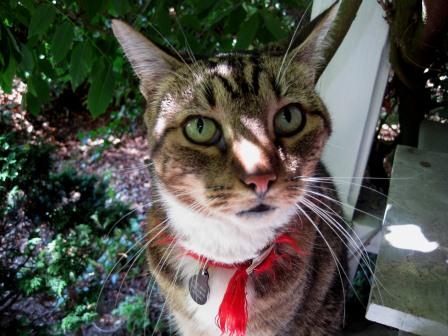 One of the nonbotanical garden residents
One of the nonbotanical garden residents

 A selection of PlantAmnesty humor
A selection of PlantAmnesty humor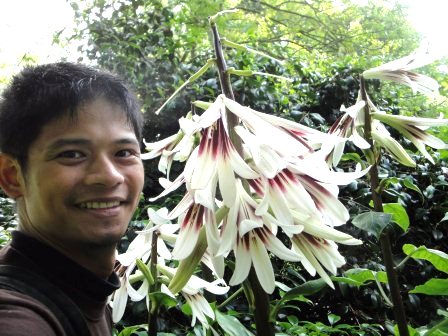
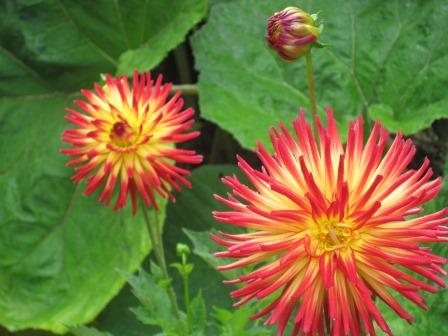
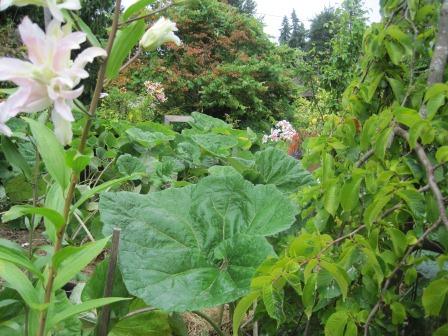
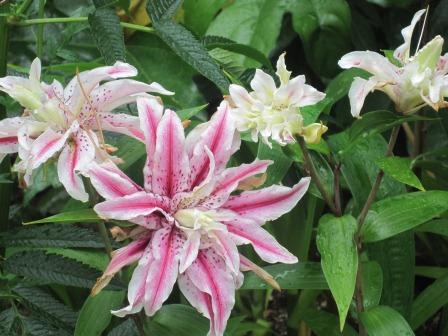
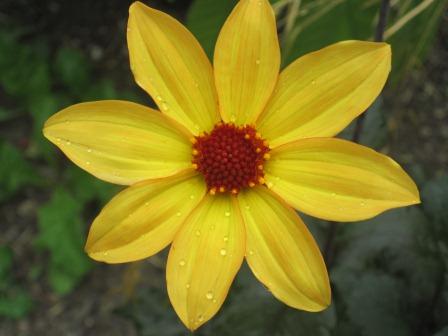
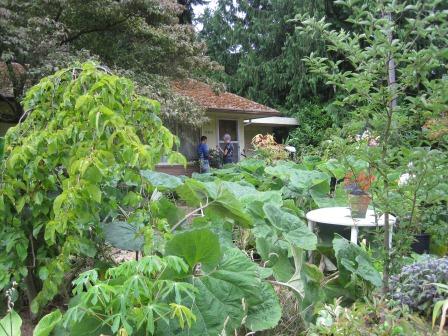
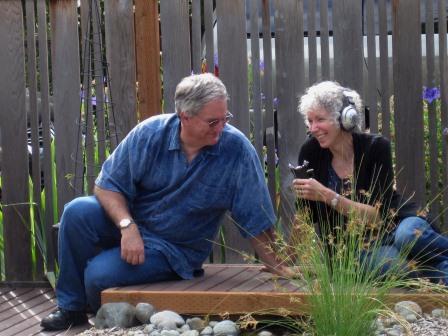
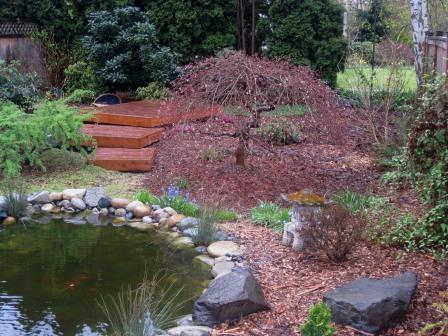 Decks…
Decks…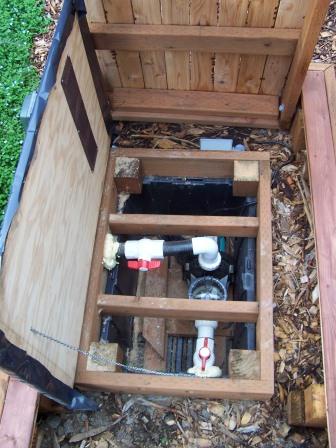 …cleverly disguise pump system…
…cleverly disguise pump system…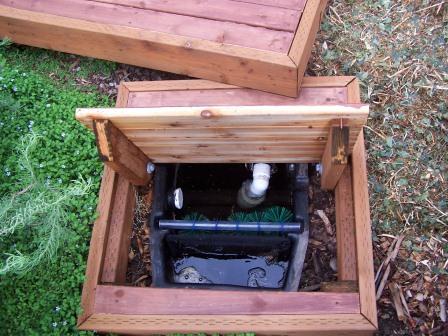 …and filter system
…and filter system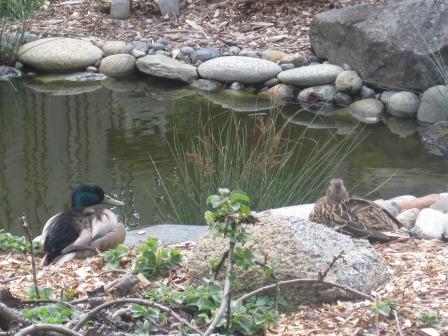 Seasonal guests
Seasonal guests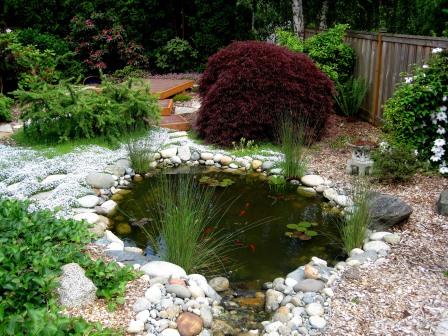 Permanent residents (the little orange guys in water)
Permanent residents (the little orange guys in water)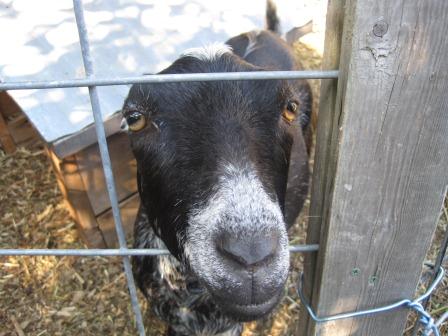
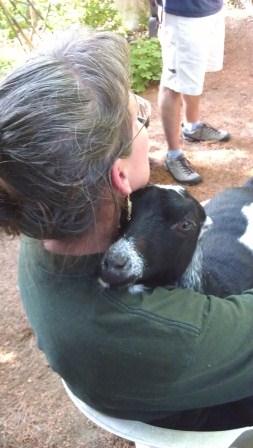 Lacia and Dalli (the goat who thinks she’s a lap dog)
Lacia and Dalli (the goat who thinks she’s a lap dog)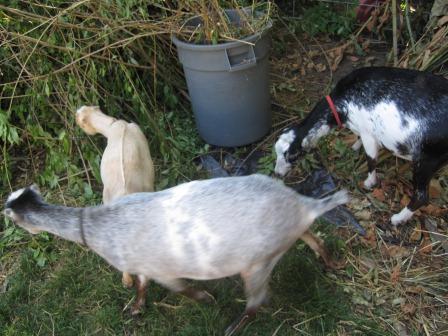 The goats make short work of most garden and yard waste
The goats make short work of most garden and yard waste My podcasting producer Tina makes some new friends
My podcasting producer Tina makes some new friends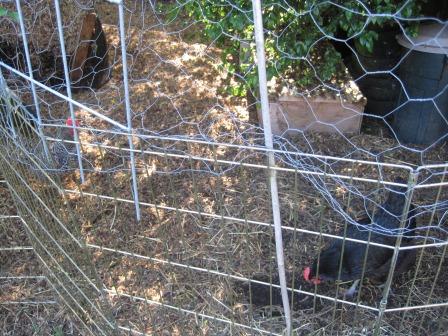 Chickens are part of the system, too. They eat bugs from the used goat bedding.
Chickens are part of the system, too. They eat bugs from the used goat bedding. Lacia setting up the milking station
Lacia setting up the milking station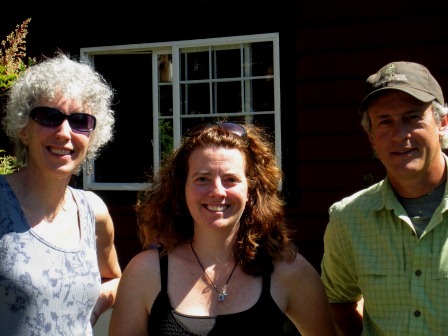
 Bee fountain
Bee fountain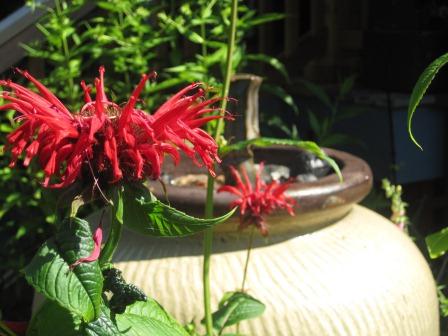 Bee heaven – nectar and lots of water
Bee heaven – nectar and lots of water Corky opens the hive
Corky opens the hive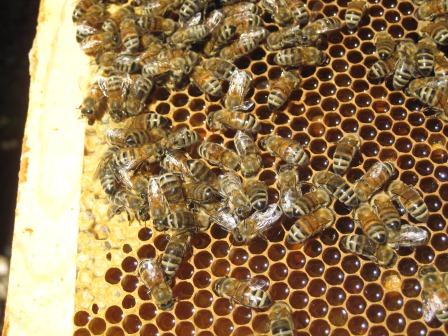 Bees and honey!
Bees and honey!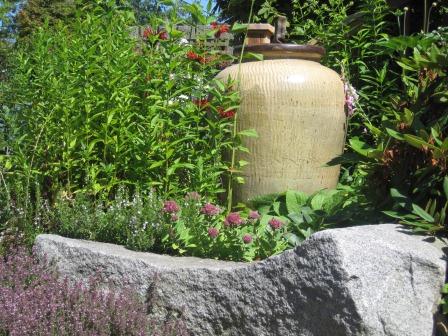 Art and the garden
Art and the garden